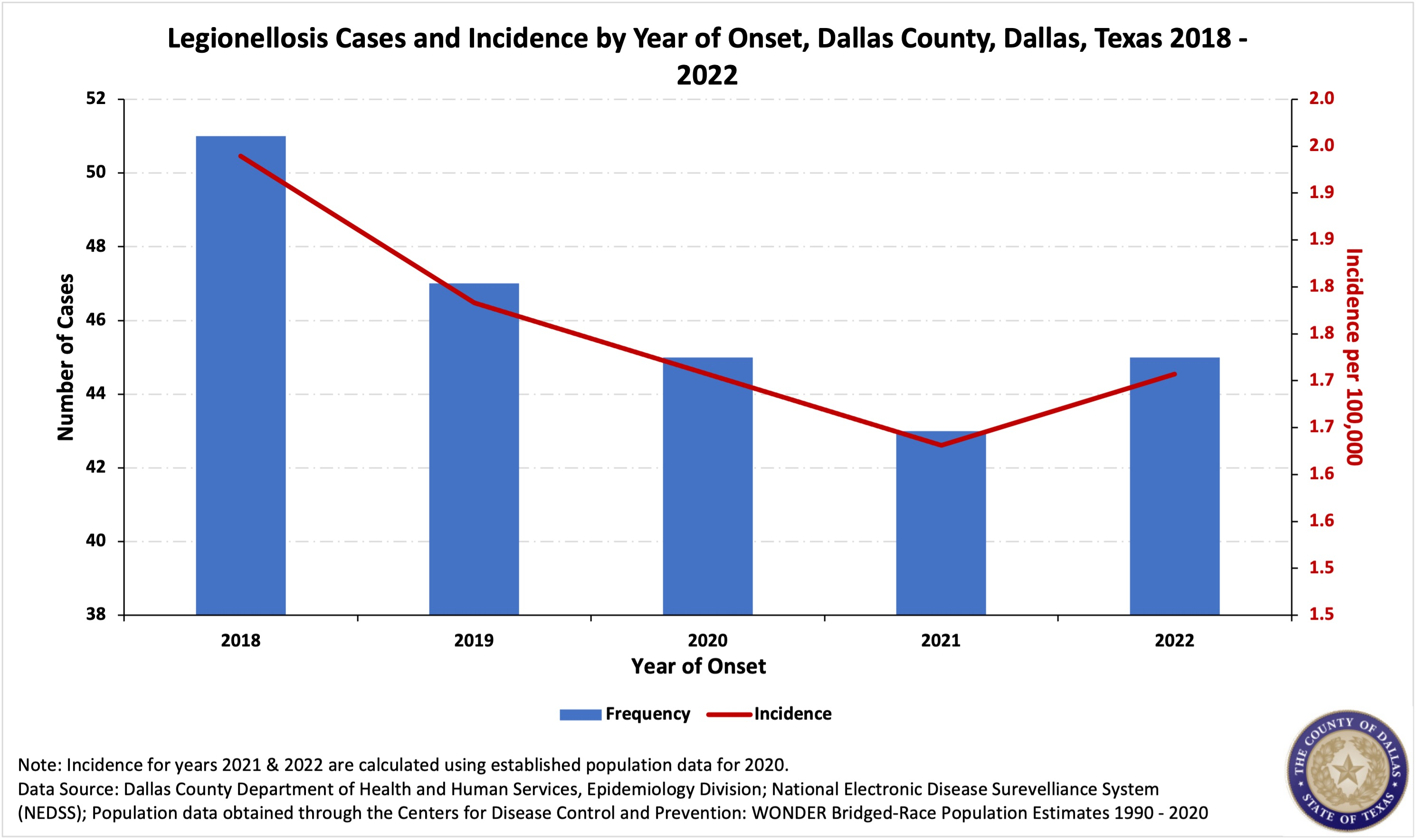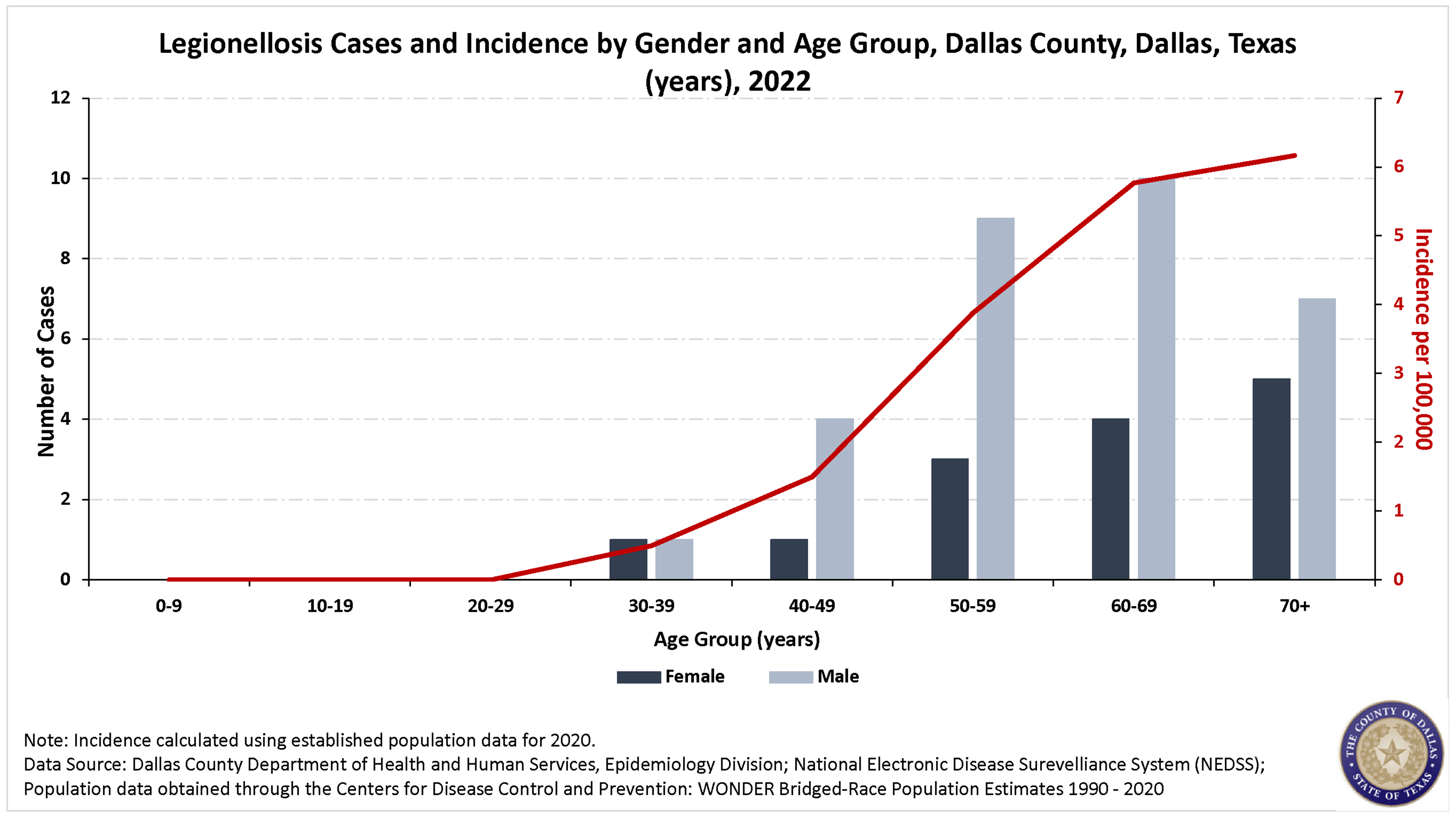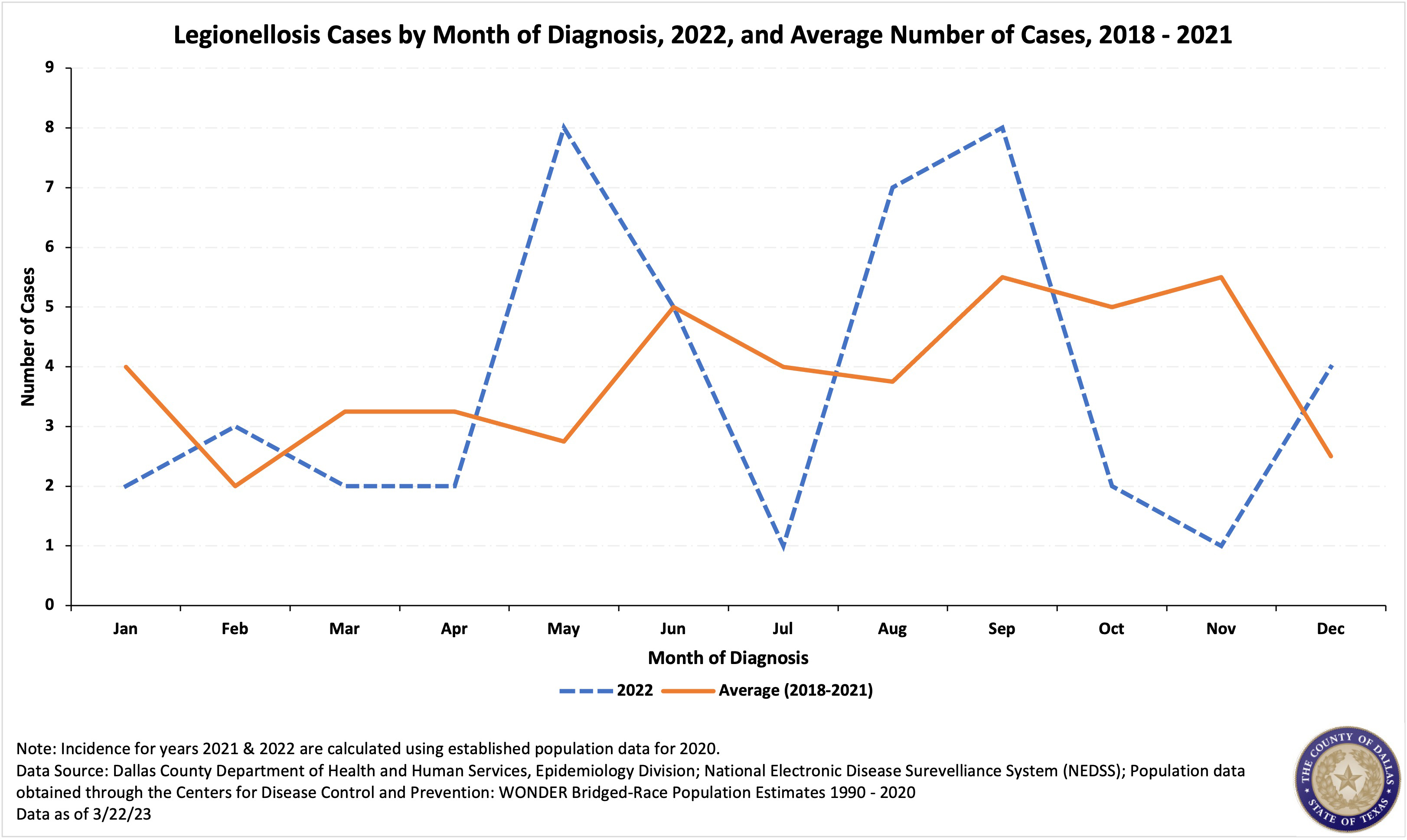Communicable Diseases
Legionella
Dallas County Health and Human Services - 2377 N. Stemmons Freeway, Dallas, TX 75207
Telephone: 214-819-2000
Legionellosis a generic term describing the pneumonic (Legionnaires’ disease) and non-pneumonic (Pontiac fever) forms of an acute, respiratory infection caused by the bacterium Legionella. An outbreak of this disease in Philadelphia in 1976, largely among people attending a state convention of the American Legion, led to its name. Legionella bacteria are found in natural freshwater sources and can grow and spread in artificial and human-made water systems.
Transmission
People get infected with Legionella by breathing in small droplets of water in the air that contain the bacteria, from a contaminated water source. Less often, people can get infected with Legionella through the aspiration of contaminated drinking water. Water contaminated with Legionella can sometimes be found in buildings with large or complex water systems, such as hotels, hospitals, and nursing homes. Other common sources of contaminated water include hot tubs and spas, air conditioning cooling towers, hot water tanks, and decorative fountains. Legionella is generally not spread from person to person, and most people exposed to the bacteria do not become ill. Some people are more likely to become very sick if they are infected with Legionella, including:
- People 50 years of age or older
- Current and former smokers
- People with chronic lung disease
- People with cancer or weakened immune systems
- People with underlying illnesses such as diabetes, kidney failure, or liver failure
Symptoms
Symptoms commonly include shortness of breath, headaches, fatigue, body aches, and fever. Non-productive cough, abdominal pains, and diarrhea occur in many patients. In patients with Legionnaires’ Disease, pneumonia develops which can cause death. With Pontiac fever there is no pneumonia, but the patient may have a high fever for 2-5 days and then recover without treatment. Legionellosis commonly occurs in patients who are elderly, immunocompromised, or otherwise in poor health.
Diagnosis
Urine and respiratory specimens can be tested to diagnose legionellosis. However, the symptoms of Legionnaires’ disease are similar to those caused by other types of pneumonia, which make it difficult for healthcare providers to diagnose. Healthcare providers can also order chest x-rays to help diagnose pneumonia.
Treatment
Legionnaires’ disease can be treated with antibiotics, and people usually recover from the infection if they are properly treated. The currently recommended drug of choice is erythromycin, which appears to be effective in treating the disease. Other drugs are available for patients unable to tolerate erythromycin. Overall, 10 percent of people with Legionnaires’ disease die. However, rates of death are higher, approximately 25 percent, when the infection is acquired from exposure to a Legionella source at a healthcare facility. Pontiac fever symptoms are generally self-limiting and don’t require treatment.
Prevention
Large water systems where Legionella can grow must be routinely cleaned and maintained. These include drinking water systems, hot tubs and spas, decorative fountains, and cooling towers. Managers of non-residential facilities, like hospitals and hotels, can consult guidelines from the American Society of Heating, Refrigerating and Air-Conditioning Engineers (ASHRAE) for appropriate water temperatures and chemical treatment of water. Hot tub operators and owners can find information on hot tub maintenance on the U.S. Centers for Disease control and Prevention (CDC) healthy water website.
Frequently Asked Questions
How common is Legionellosis in the United States?
It is estimated that around 10,000 people develop the disease each year in the United States. An additional unknown number are infected with Legionella bacteria but have only a minor illness or no illness at all. The disease can occur in outbreaks or as single cases.
More Information
- https://www.dshs.texas.gov/legionellosis-legionnaires-disease
- https://www.cdc.gov/legionella/index.html



Content Source:
- https://www.dshs.texas.gov/legionellosis-legionnaires-disease/legionellosis-legionnaires-disease-faqs
- https://www.cdph.ca.gov/Programs/CID/DCDC/CDPH%20Document%20Library/LegionellosisFactSheet.pdf
QUICK LINKS
LOCATIONS
EMPLOYEES
-
You must be on the network to see these links.





